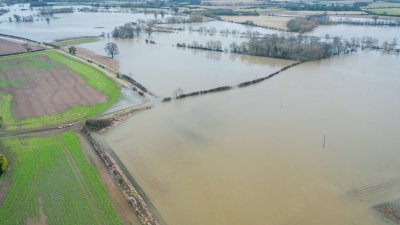
Improving access to redress for workers vulnerable to violence and harassment in South Asia
Experts discuss the factors that make some workers more vulnerable than others to violence and harassment.
This page is approximately a 4 minute read
This page was published on

total investment by Lloyd's Register Foundation in 2023 into projects to put the World Risk Poll into action.
This project will be delivered by researchers at Cardiff University and King’s College London, with support from charitable organisations (510 – an initiative of the Netherlands Red Cross, and Geology for Global Development) and UN agencies (UN-Habitat and UNESCO Earth).
One of the four priorities of the United Nation’s strategy for reducing disaster losses (the ‘Sendai Framework for Disaster Risk Reduction’) is enhancing disaster preparedness, particularly at the household level. Household preparedness plans are a vital part of a resilient community, but their use is not widespread.
Many people affected by disasters live in regions that are affected by multiple, interrelated hazards. For example, they may live in a region affected by earthquakes, tropical storms, landslides, and floods. These hazards don’t always occur alone. One hazard can trigger or increase the likelihood of another hazard happening (for example, an earthquake can trigger many landslides, some of which may block a river and trigger a flood). Different hazards can also take place at the same time or one after the other, placing significant pressure on already limited services and infrastructure. Reducing the impacts of disasters in such ‘multi-hazard’ contexts requires interventions, including household preparedness plans, to recognise these interrelationships and complexities.
We will first understand why certain regions of the world already have high numbers of households with preparedness plans. We’ll look at relevant reports and speak to relevant organisations in case study countries to gather this information. This will help the project team to reflect on how we can support the development and use of household preparedness plans in other places. We then plan to develop and test a suite of resources (or tools) that households (and organisations who work with households, such as charities) can use to help prepare for disasters in places where they are affected by multiple, interrelated hazards. To ensure these are useful and useable, we will spend time in a case study region and get input and advice in a range of ways (including interviews, focus groups, and workshops). We want our resources to be used by as many people as possible, so we also plan to find ways to discuss and share them in international summits and meetings (including those coordinated by the United Nations).
Disasters affect the poorest in society the most and threaten progress towards shared global ambitions for a better, more equitable and sustainable world. This project therefore aims to reduce disaster impacts, focusing on the most vulnerable households within low-income and lower-middle income countries. As a result of our work, these households will have improved understanding of, and capacity to enact, multi-hazard household preparedness plans.
The World Risk Poll 2021 report ‘A Resilient World? Understanding vulnerability in a changing climate’ from Lloyd’s Register Foundation found that large differences exist in the use of household preparedness plans. World Risk Poll data will help us identify countries with both high and low uptake of household preparedness plans. We can use this information to select case study countries where we can expect to learn a lot about existing good practices, and case study countries where we can hope to create a positive impact by making people safer. Future iterations of the World Risk Poll also provide us with an opportunity to monitor whether our project is having the positive impact we hope it will have, in the years ahead.
Effective household preparedness plans (those that are useful, useable, and used) require broad support from institutions and agencies with responsibility for and resources to support disaster risk reduction (such as charities, government agencies, and intergovernmental groups). We’d value the opportunity to talk to organisations working at this household level to reduce impacts from disasters, from all and any geographies.
To find out more about this project, get in touch with the project team at [email protected].